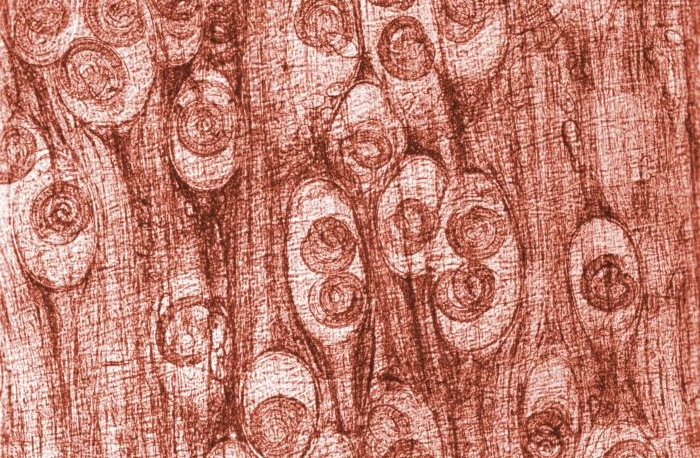To further our NTD discussion from last week, this week we will be discussing soil-transmitted helminthiases. These are intestinal infections caused by parasitic worms, which includes Ascariasis, Hookworm and Whipworm. Together, the three infections are classified as neglected tropical diseases due to the crippling disability they can cause despite being able to be controlled or eliminated (1). Globally, there are approximately 807-1,121 million Ascaris infections, 604-795 million living with whipworm infections and 576-740 million living with hookworm infections (1).
Ascariasis and whipworm infections are often transmitted to humans through the use of animal fertilizers, or when people touch contaminated soils and then touch their mouth or eat vegetables without properly washing them first (2). When infected, the parasites survive in the intestines and lay eggs that are released through feces (2). Ascariasis infections, caused by the Ascaris lumbricoides worm, can potentially cause intestinal blockage or impair growth (2). Often, those infected with the worms show no symptoms or have a minor cough as the worm and its larvae moves through the body (2). Whipworm infections, caused by the Trichuris trichiura worm, often have no signs or symptoms, however, severe infections can cause painful passage of stool, that can be a combination of mucus, water and blood, or severe diarrhea (3).
Hookworm infections are caused by two species of worms: Ancylostoma duodenale and Necator americanus. Compared to ascariasis and whipworm, there is a slightly different mode of transmission. Soil contamination is similar, as hookworm is passed through feces that typically are used for fertilizer, but rather than accidental consumption of the parasite, hookworm eggs can also penetrate the skin of humans, especially when walking barefoot (4). Rash at the site of exposure and itching are the common symptoms of hookworm, but severe infection can cause abdominal pain, weight loss, fatigue and anemia, which may lead to impaired cognitive function and physical growth in children (4).
When diagnosed, any of the helminth infections are treatable through anthelminthic medication, including albendazole and mebendazole (5). However, since many infections do not present with symptoms initially, the worms can reproduce causing more severe infections and increased risk of disease spread before people realize that there is an issue. To combat this, public health organizations are working towards controlling and eliminating soil-transmitted helminthiases through mass drug administration campaigns. Since risk groups for these infections are able to be identified, and the medications used to treat infections are safe to use and relatively inexpensive, public health officials are able to offer preventative treatment to the entire group of people who may have been exposed to the parasite. These treatment campaigns are conducted in populations at risk, regardless of whether or not they have an active infection (4). This allows for controlling the spread of the parasite as those who have undiagnosed infections receive medications that can prevent them from contaminating soil sources.
Soil-transmitted helminthiases are circulating at huge rates globally, with approximately two billion infections a year between the three types of helminths. In order to effectively control and eliminate these neglected tropical diseases, dedicated efforts for mass drug administrations, which requires substantial man power, education and medication access, must be available to make sure at-risk groups are properly targeted.
Sources
[1] https://www.cdc.gov/parasites/sth/index.html
[2] https://www.cdc.gov/parasites/ascariasis/index.html
[3] https://www.cdc.gov/parasites/whipworm/gen_info/faqs.html
[4] https://www.cdc.gov/parasites/hookworm/gen_info/faqs.html
[5] https://www.cdc.gov/parasites/ascariasis/treatment.html

